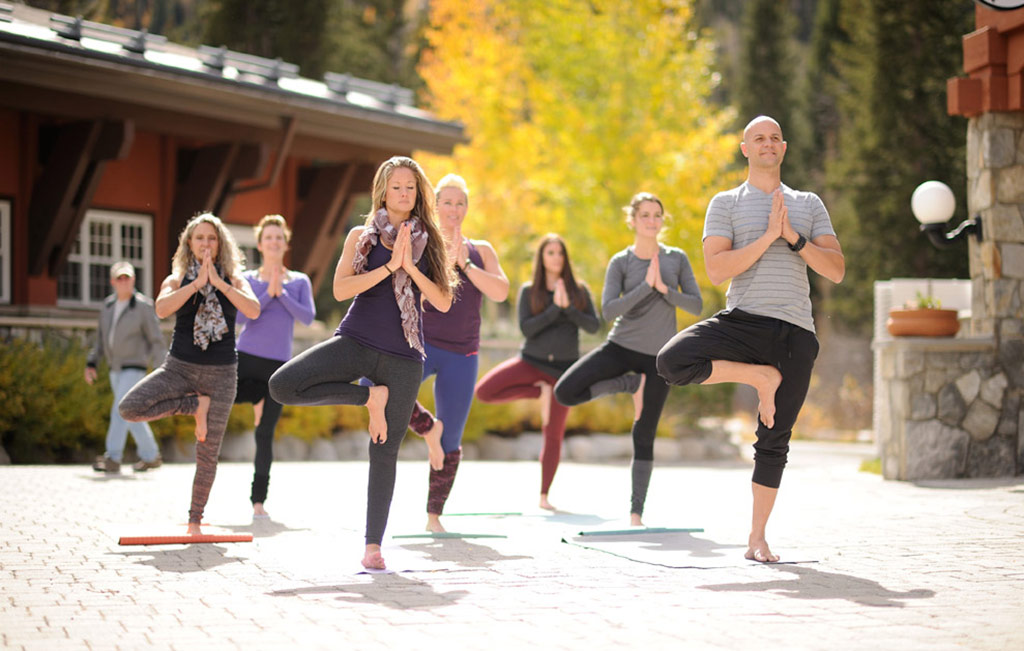
The “shoulder seasons”—spring and fall—are often cited as favorites. According to a Gallup poll, more people favor spring and fall over summer (which is actually not far behind fall) and winter. The shoulder seasons give us relief from the relentless, predictable heat and cold of summer and winter.
The shoulder seasons can also be quite unpredictable. For example, just last week, it was a crisp 40 degrees one morning. The next day, the overnight low was 65. The daytime highs climbed back to the upper 80s after a few days of lovely 70-degree temps. These changes can be disorienting and can make us feel temporarily unmoored.
In these times of unpredictability, I like to practice and teach what you might call “transition yoga.” Transition yoga is meant to promote grounding and stability. Not only can it help you feel more stable through seasonal shifts, but it can also help you stay centered during life transitions.
Transition Yoga
In general, these particular classes of poses serve to stabilize your body and mind:
- Balance Poses: Balancing, including standing, sitting, hands-and-knees or inverted balance poses, help to stabilize your muscles and collect your mind. They help develop proprioception. These are staples of a transition yoga practice.
- Standing Poses: Standing poses, in general, are grounding. My favorite standing poses for grounding are Virabhadrasana I (Warrior I) and Virabhadrasana II (Warrior II).
- Seated Forward Folds: Seated Forward Folds are inherently calming. Of course, you want to make sure you practice them with care, making sure your pelvis leads the movement forward. Your spine and pelvis should move together, rather than your pelvis hanging back while your spine bends forward.
- Restorative Yoga: Adding a restorative pose or two to your daily routine can help calm agitation. My favorite restorative pose for promoting grounding is Supta Baddha Konasana (Supine Bound Angle Pose).
- Miscellaneous Grounding Poses: Here are a few poses that promote grounding that don’t fit into the other categories here: Malasana (Squatting Pose); any core-strengthening poses such as “yoga sit-ups” or Bhujangasana (Cobra Pose) or Salabhasana (Locust Pose).
- A Generous Savasana: Savasana is the most important pose in asana practice. All the other poses lead to Savasana. Giving yourself a longer relaxation can help soothe agitation. For example, if you normally practice for 10 minutes, try 15 or 20. Notice how a longer Savasana affects how you meet the rest of your day.
- Meditation: Mindfulness practice, with its emphasis on settling into the flow of changing sensations, can help you learn how to relax into the flow of change in your life. You can apply mindfulness to a formal sitting practice, or you can apply it to the poses you practice in your own transition yoga.
